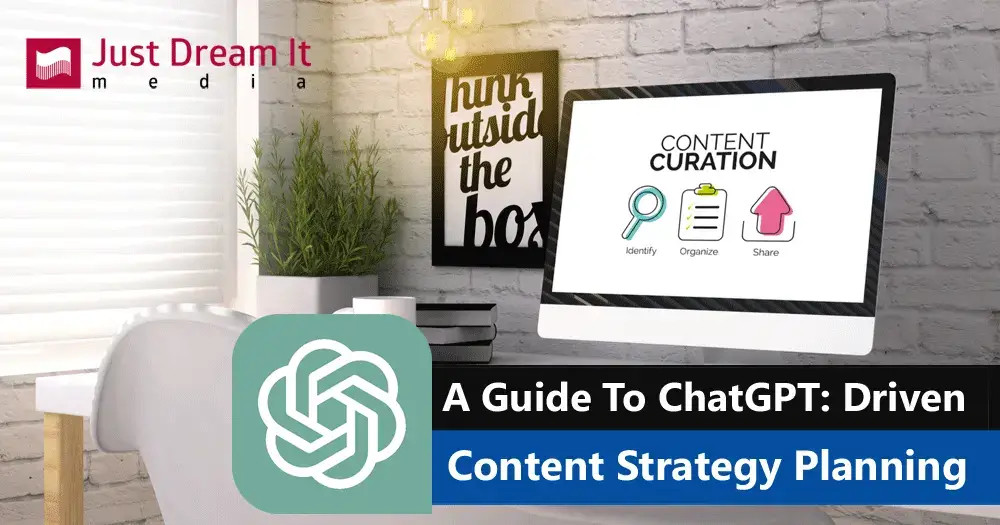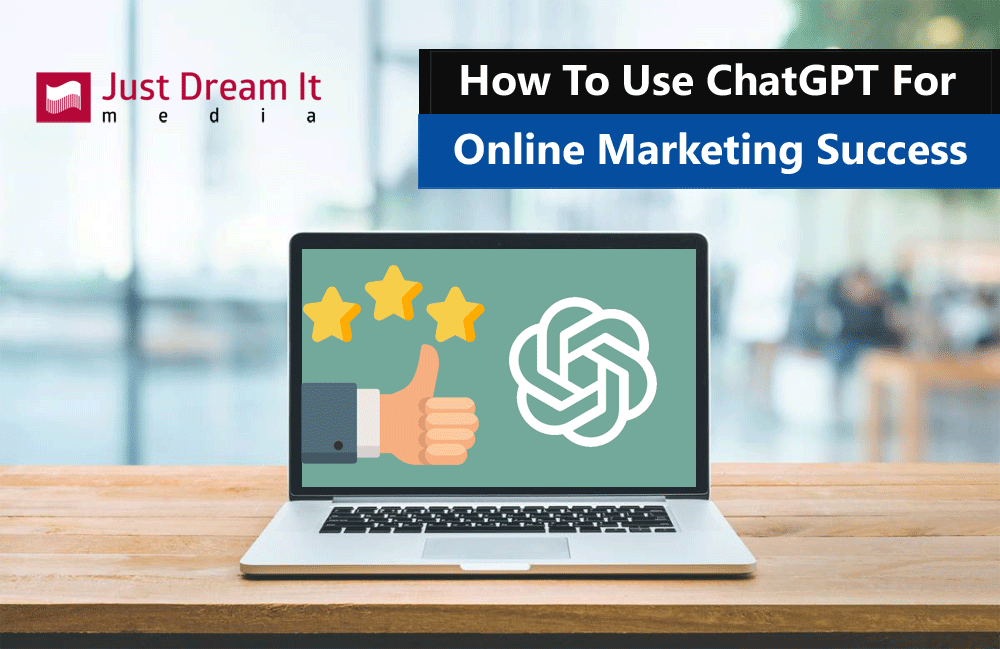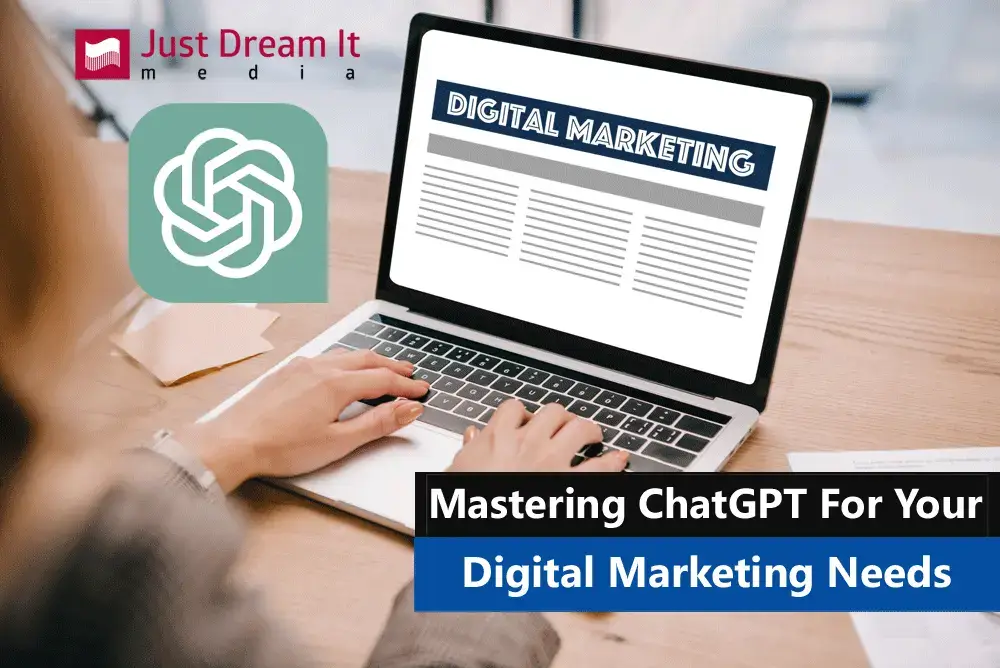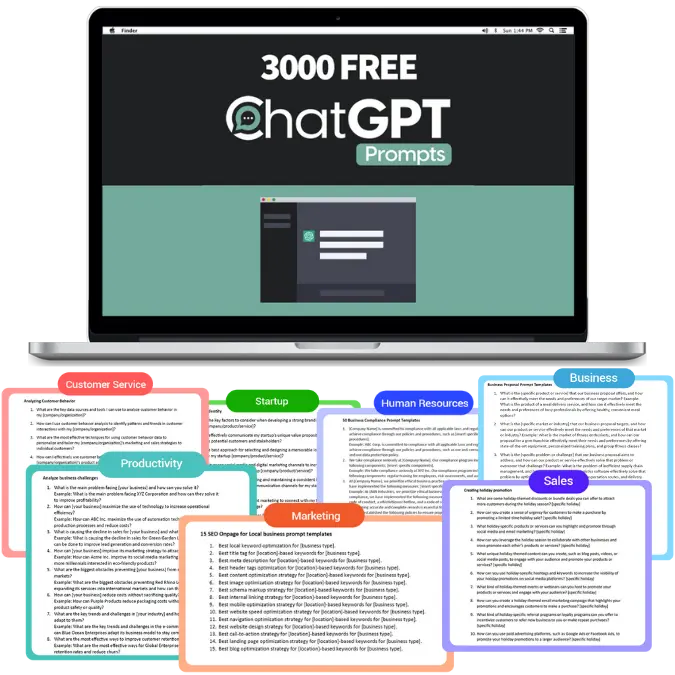Unleashing the Power of ChatGPT: A Comprehensive Guide to ChatGPT-Driven Content Strategy Planning for Beginners
Introduction
As artificial intelligence (AI) continues to revolutionize the world of content creation, ChatGPT has emerged as a powerful tool for marketers and writers. This comprehensive guide will take you through the process of creating a ChatGPT-driven content strategy, from setting goals to refining your approach. We’ll explore real-life examples and show you how to use long-tail keywords naturally within the content for the best SEO results.
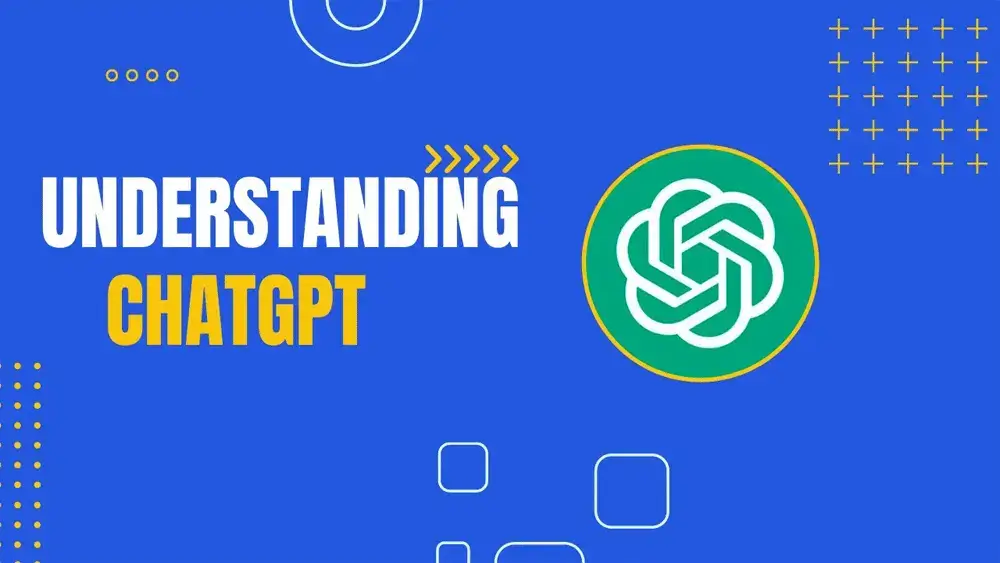
Understanding ChatGPT
ChatGPT, based on the GPT-4 architecture, is a sophisticated AI model developed by OpenAI. It can generate human-like text, making it an invaluable resource for content creators. Let’s dive into its key features, capabilities, and limitations.
Key Features and Capabilities
With ChatGPT, you can generate high-quality content, brainstorm ideas, research topics, and even write SEO-friendly titles and meta descriptions. For example, a travel blogger might use ChatGPT to generate a list of unique destinations for an upcoming article, while a marketing team might employ it to create engaging social media posts.
Limitations and Ethical Considerations
Despite its impressive capabilities, ChatGPT has limitations. It relies on the data it was trained on, so it might produce outdated or biased information. It’s crucial to verify the information it generates and adhere to ethical guidelines when using ChatGPT for content creation.
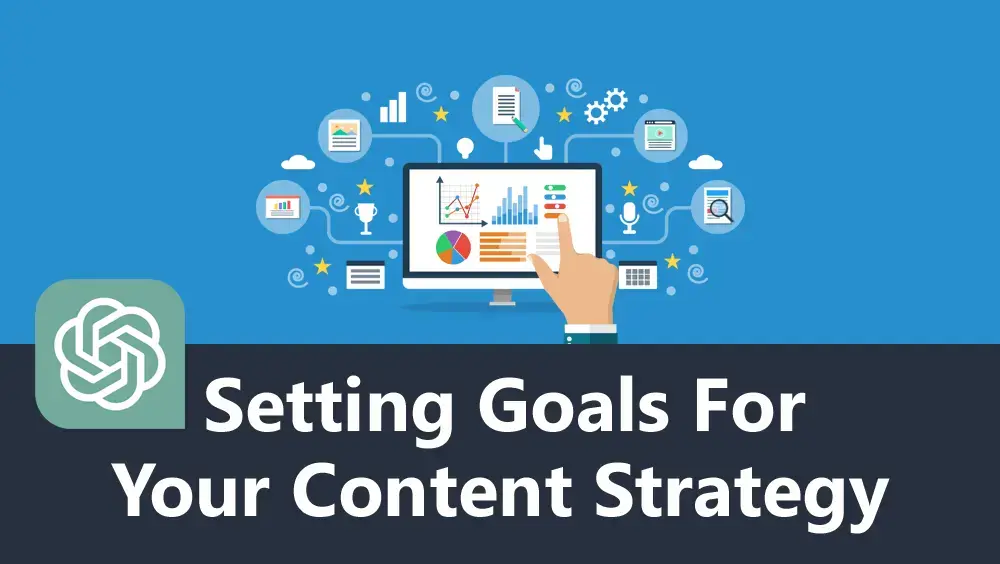
Setting Goals for Your Content Strategy
A successful content strategy begins with clearly defined goals. Here’s how to get started:
Defining Your Target Audience
Identify your target audience to create relevant and valuable content. For example, if you run an eco-friendly fashion blog, your target audience might be environmentally conscious consumers interested in sustainable clothing.
Aligning Content Goals with Business Objectives
Ensure your content goals align with your overall business objectives. For instance, if your goal is to increase online sales, create content that showcases your products and highlights their benefits.
Measuring Success: KPIs and Metrics
Determine the key performance indicators (KPIs) and metrics that will help you measure the success of your content strategy. Examples include website traffic, social media engagement, and conversion rates.
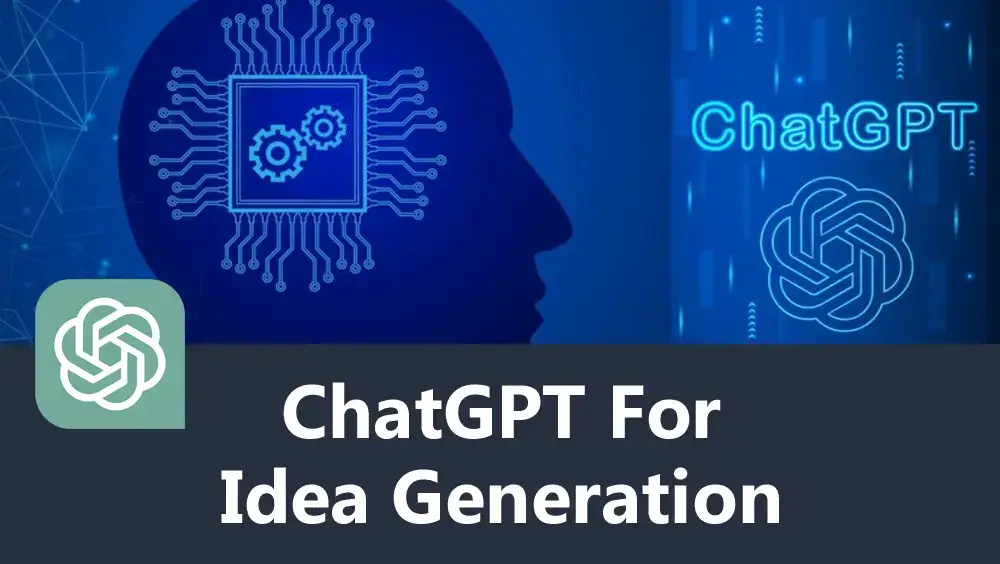
ChatGPT for Idea Generation
Brainstorming with ChatGPT
Utilize ChatGPT to generate content ideas. For example, a food blogger might ask ChatGPT for a list of innovative vegan dessert recipes. The AI could produce suggestions like “Vegan Chocolate Mousse with Avocado” or “Coconut Milk Panna Cotta with Mango Coulis.”
Evaluating Ideas for Relevance and Value
Analyze the ideas generated by ChatGPT for relevance and value to your target audience. Ensure they align with your content goals and business objectives.
Organizing Ideas into Themes and Topics
Categorize your ideas into themes and topics to create a cohesive content plan. For instance, a tech blog might group ideas into categories such as “Gadgets,” “Software,” and “Industry News.”
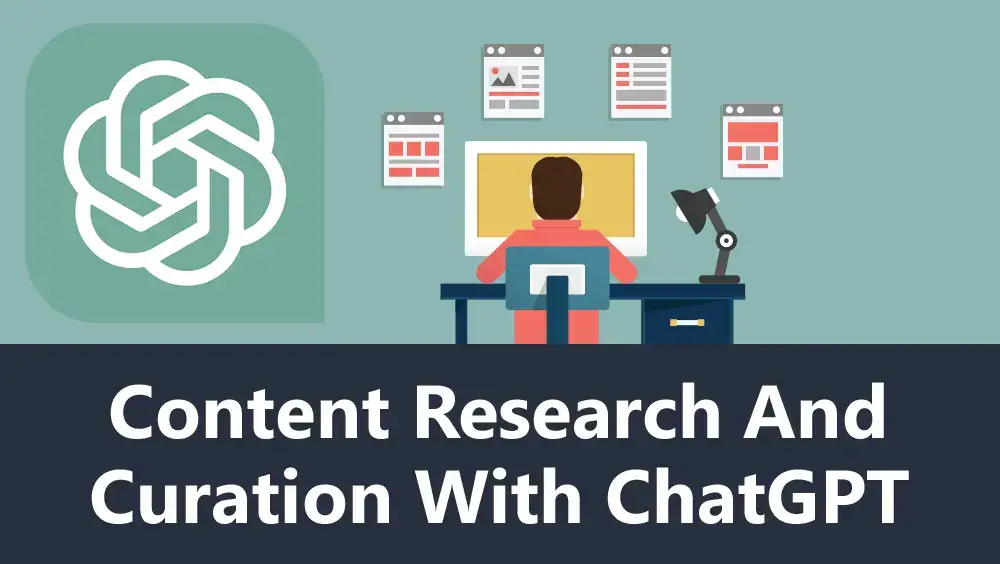
Content Research and Curation With ChatGPT
ChatGPT as a Research Assistant
Use ChatGPT to help with research by asking for information or sources on specific topics. For example, if you’re writing about the benefits of a plant-based diet, ChatGPT might provide you with relevant studies or articles.
Finding Reliable Sources and Fact-Checking
Verify the information provided by ChatGPT and fact-check using reliable sources. Cross-reference data from multiple sources to ensure accuracy.
Curating Content for Different Channels and Formats
Tailor your content for various channels and formats. For instance, transform a lengthy blog post into a series of social media updates or an infographic to share on Pinterest.
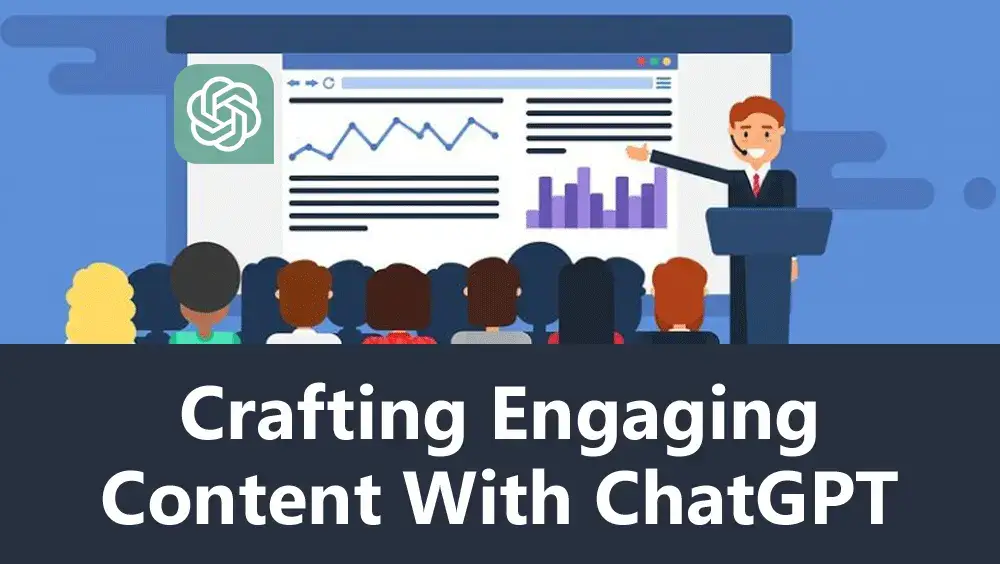
Crafting Engaging Content with ChatGPT
ChatGPT can help create captivating content for different platforms and formats, enhancing your content strategy.
Writing High-Quality Articles and Blog Posts
Use ChatGPT to draft articles and blog posts that engage your target audience. For instance, a fitness blogger might ask ChatGPT to generate an introductory paragraph for a post on “The Benefits of High-Intensity Interval Training.” ChatGPT could produce a compelling introduction, which the blogger can then edit and refine.
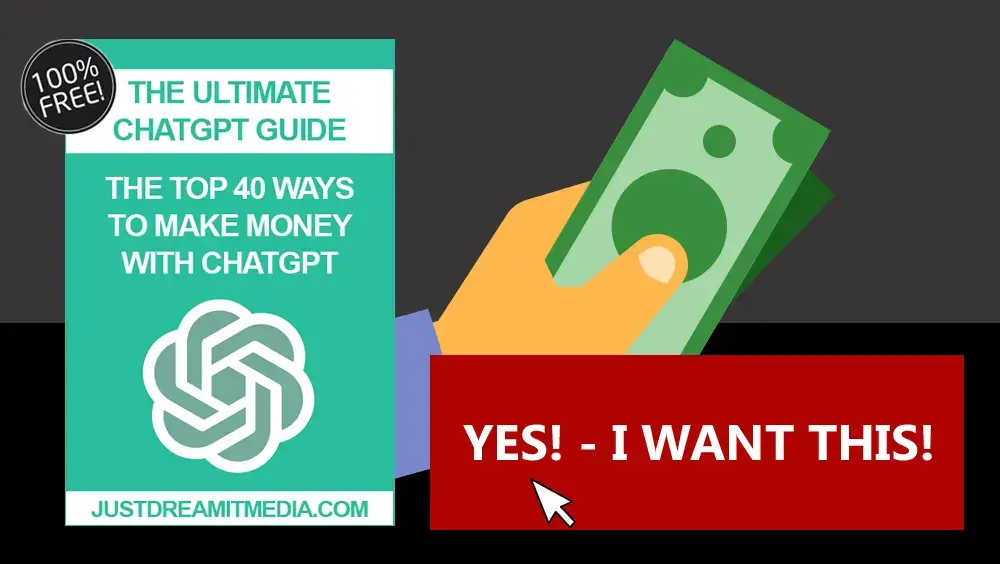
Creating Compelling Social Media Content
Leverage ChatGPT to develop eye-catching social media posts that resonate with your audience. For example, a digital marketing agency might use ChatGPT to generate captivating copy for a Facebook ad campaign promoting their services.
Developing Multimedia Content: Scripts, Podcasts, and Videos
ChatGPT can also help you create scripts for videos, podcasts, or webinars. For example, a YouTuber could use ChatGPT to generate a script for a video tutorial on “How to Set Up Google Analytics for Your Website.
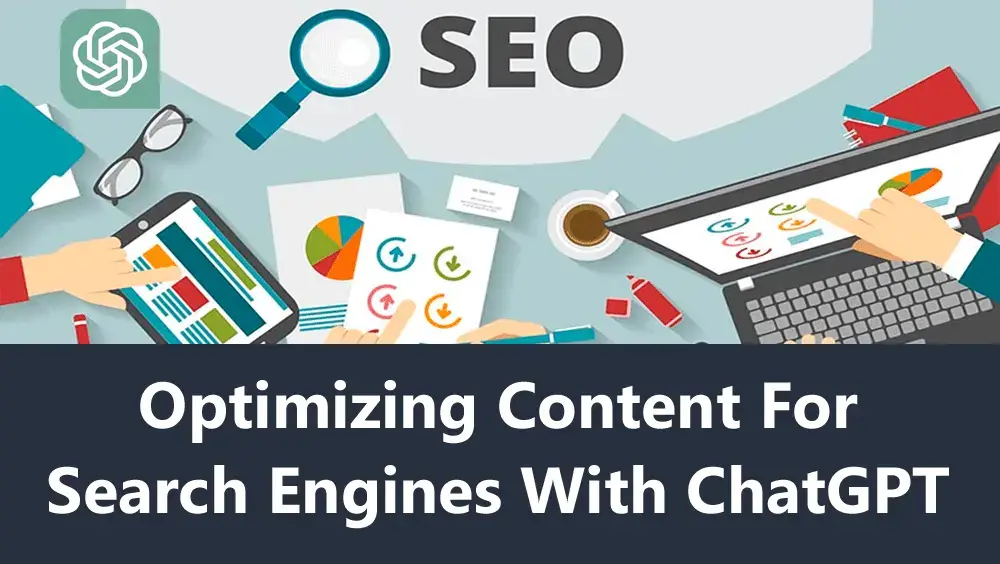
Optimizing Content for Search Engines With ChatGPT
Incorporating SEO best practices is essential for driving organic traffic to your content. ChatGPT can assist in various aspects of SEO optimization.
Utilizing ChatGPT for Keyword Research
Ask ChatGPT for long-tail keyword suggestions related to your topic. For instance, if you’re writing about “AI-driven content planning,” ChatGPT might suggest keywords like “ChatGPT content strategy guide” or “GPT-4 for content creation.”
Crafting SEO-Friendly Titles and Meta Descriptions
Use ChatGPT to generate compelling titles and meta descriptions that include your target keywords. For example, for an article on “ChatGPT and customer personas,” ChatGPT could suggest a title like “Leveraging ChatGPT to Craft Accurate Customer Personas for Your Business.
Enhancing Readability and User Experience
Ensure your content is easily digestible and user-friendly by breaking it into short paragraphs, using subheadings, and incorporating bullet points or numbered lists where appropriate.
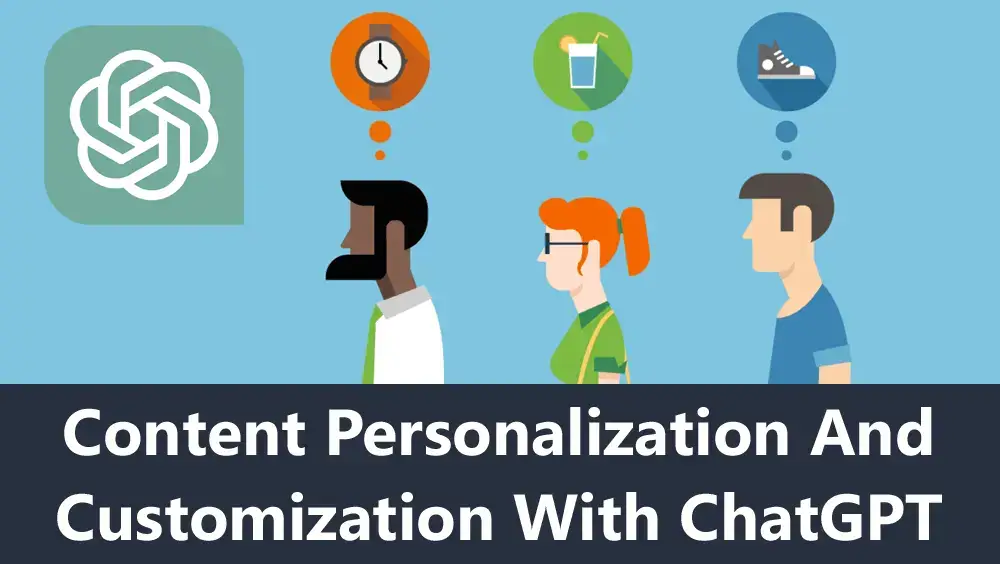
Content Personalization and Customization With ChatGPT
Personalizing and customizing your content can increase engagement and conversions.
Identifying Customer Personas and Segments
Use ChatGPT to help you develop customer personas or identify different audience segments. For example, an online retailer might ask ChatGPT to create a persona for their eco-conscious customers, including demographics, preferences, and pain points.
ChatGPT for Personalized Messaging and Recommendations
Leverage ChatGPT to generate personalized messages and content recommendations for different customer segments. For instance, a travel agency might use ChatGPT to craft tailored email campaigns for solo travelers, families, and couples.
Adjusting Content to Different Stages of the Buyer’s Journey
Adapt your content to address the needs and concerns of your audience at various stages of the buyer’s journey. ChatGPT can help you create content that addresses awareness, consideration, and decision-making stages.
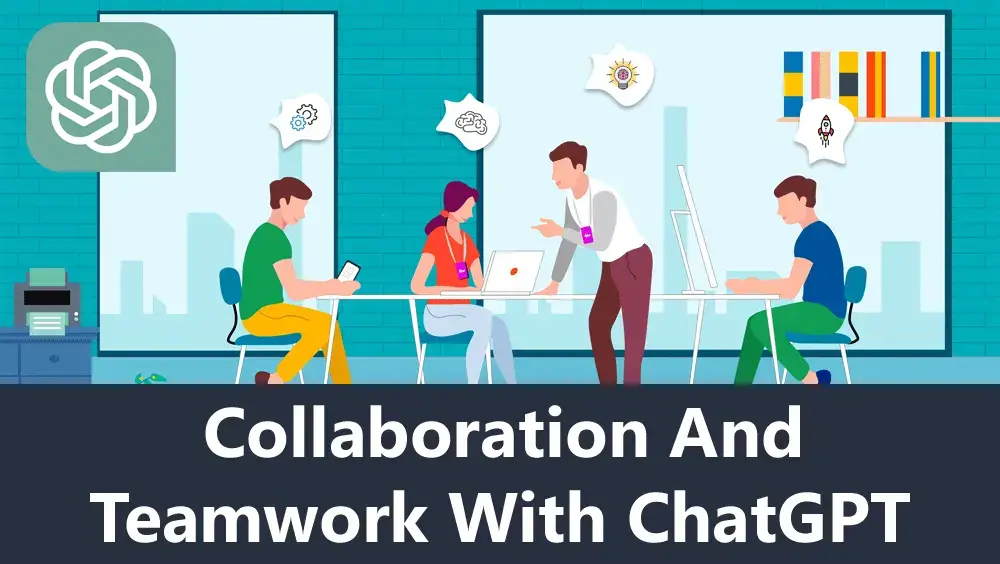
Collaboration and Teamwork with ChatGPT
ChatGPT can streamline collaboration and improve efficiency within your team.
Delegating Tasks and Responsibilities
Distribute tasks among team members based on their strengths and areas of expertise. For example, assign one team member to generate ideas with ChatGPT, another to research, and a third to edit and finalize the content.
Streamlining Communication and Feedback
Use ChatGPT to facilitate communication and feedback within your team. For instance, team members can use ChatGPT to draft feedback on a piece of content, which can then be shared and discussed.
Improving Efficiency and Reducing Workload
ChatGPT can help reduce the workload on your team by generating draft content, providing research assistance, and automating repetitive tasks. This allows your team to focus on higher-level strategic decisions and creative tasks, ultimately improving overall productivity.
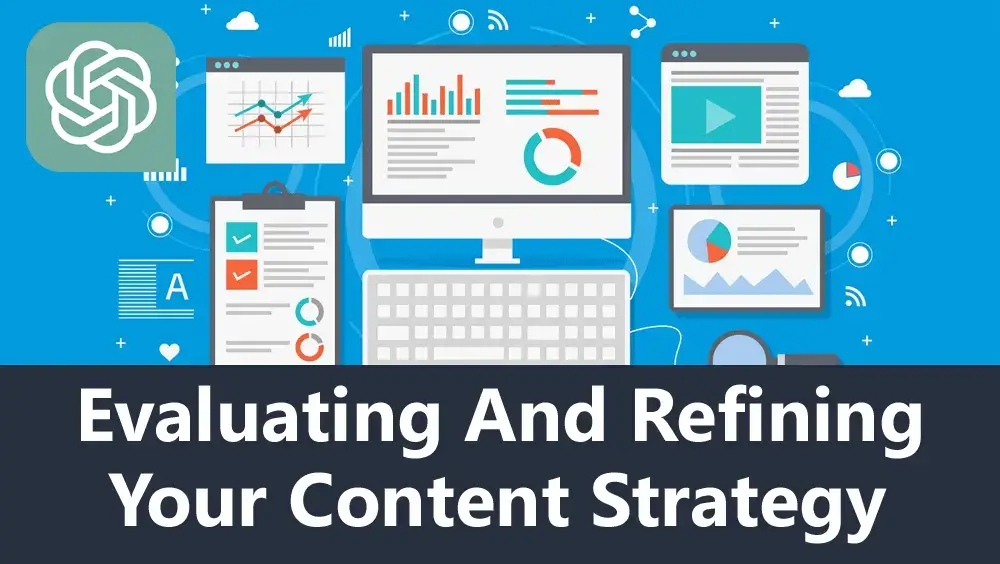
Evaluating and Refining Your Content Strategy
Regularly analyze the performance of your content strategy and make adjustments as needed to achieve better results.
Analyzing Performance Metrics and Insights
Monitor the KPIs and metrics you established earlier to evaluate the success of your content strategy. Use tools like Google Analytics, social media analytics, and email marketing analytics to gather insights.
Identifying Areas for Improvement
Based on your analysis, identify areas where your content strategy could be improved. For example, you might notice that your blog posts aren’t generating as much traffic as your videos, indicating a need to focus more on multimedia content.
Adapting Your Content Strategy Based on Results
Revise your content strategy based on your findings and continue to monitor performance. This iterative approach will help you fine-tune your strategy over time for optimal results.
In this comprehensive guide, we’ve explored how ChatGPT can transform your content strategy planning. By leveraging ChatGPT’s capabilities for idea generation, research, content creation, and optimization, you can create a powerful, AI-driven content strategy that engages your target audience and aligns with your business objectives. Remember to regularly evaluate and refine your strategy to ensure continued success.

Embarking on a content strategy journey with ChatGPT can be a game-changer for beginners. This guide covers several essential aspects to help you make the most of this powerful AI-driven tool.
Here are the main points with descriptions to get you started:
1.Introduction to ChatGPT: Learn about the rise of ChatGPT in content creation, its importance in developing a solid content strategy, and how it can transform the content planning process.
2. Exploring ChatGPT: Understand the GPT-4 architecture, key features, capabilities, limitations, and ethical considerations of using ChatGPT in content creation.
3. Setting content strategy goals: Define your target audience, align content goals with business objectives, and measure success using KPIs and metrics.
4. Idea generation with ChatGPT: Use ChatGPT for brainstorming, evaluating ideas for relevance and value, and organizing ideas into themes and topics.
5. Content research and curation: Employ ChatGPT as a research assistant, find reliable sources, fact-check, and curate content for different channels and formats.
6. Crafting engaging content: Utilize ChatGPT to write high-quality articles and blog posts, create compelling social media content, and develop multimedia content like scripts, podcasts, and videos.
7. SEO optimization: Use ChatGPT for keyword research, crafting SEO-friendly titles and meta descriptions, and enhancing readability and user experience.
8. Personalizing and customizing content: Identify customer personas and segments, leverage ChatGPT for personalized messaging and recommendations, and adjust content for different stages of the buyer’s journey.
9. Collaborating and working with ChatGPT: Delegate tasks and responsibilities, streamline communication and feedback, and improve efficiency and reduce workload in your team.
10. Evaluating and refining your content strategy: Analyze performance metrics and insights, identify areas for improvement, and adapt your content strategy based on results.
By understanding these essential aspects of using ChatGPT for content strategy planning, beginners can harness the power of AI to create engaging, informative, and valuable content for their target audience.

Creating an action plan based on the comprehensive guide to ChatGPT-driven content strategy planning will help you seamlessly integrate this powerful AI tool into your content creation process.
Here’s a step-by-step action plan to get you started:
1. Familiarize yourself with ChatGPT: Begin by learning about ChatGPT’s architecture, features, capabilities, limitations, and ethical considerations to ensure responsible usage.
2. Define your content strategy goals: Identify your target audience, align content goals with your business objectives, and establish KPIs and metrics to measure success.
3. Generate ideas using ChatGPT: Leverage ChatGPT to brainstorm content ideas, evaluate their relevance and value, and organize them into themes and topics.
4. Conduct research with ChatGPT: Utilize ChatGPT as a research assistant to gather information, find reliable sources, and fact-check the data.
5. Craft engaging content: Use ChatGPT to write high-quality articles, blog posts, social media posts, and multimedia content such as scripts, podcasts, or videos.
6. Optimize content for search engines: Incorporate long-tail keywords, craft SEO-friendly titles and meta descriptions, and enhance readability and user experience.
7. Personalize and customize content: Develop customer personas, use ChatGPT for personalized messaging and recommendations, and create content tailored to different stages of the buyer’s journey.
8. Collaborate with your team: Delegate tasks and responsibilities, streamline communication and feedback, and improve efficiency with ChatGPT’s assistance.
9. Monitor content performance: Regularly analyze KPIs and metrics, identify areas for improvement, and adapt your content strategy based on the results.
10. Refine and iterate: Continuously evaluate and refine your content strategy, incorporating insights and learning from your performance analysis to achieve better results.
By following this action plan, you can effectively integrate ChatGPT into your content strategy planning, harnessing the power of AI to create engaging, informative, and valuable content that resonates with your target audience.

Starting with ChatGPT for content strategy planning can raise a lot of questions for beginners. Here are 10 frequently asked questions with answers to help you better understand this powerful AI tool:
1. What is ChatGPT?
Answer: ChatGPT is an advanced AI language model developed by OpenAI, based on the GPT-4 architecture. It can generate human-like text and is an invaluable resource for content creators, marketers, and writers.
2. Can ChatGPT replace human content creators?
Answer: While ChatGPT can automate certain aspects of content creation, it does not replace human creativity, empathy, and strategic thinking. Instead, it serves as a valuable tool to enhance productivity and streamline the content creation process.
3. How can ChatGPT help with content strategy planning?
Answer: ChatGPT can assist in various aspects of content strategy planning, including idea generation, research, content creation, SEO optimization, personalization, and collaboration.
4. Is it ethical to use ChatGPT-generated content?
Answer: Yes, as long as you adhere to ethical guidelines, verify the information generated, and avoid using the tool to create deceptive or harmful content.
5. How can I use ChatGPT for keyword research?
Answer: You can ask ChatGPT for long-tail keyword suggestions related to your topic, and it will provide you with relevant options to incorporate into your content.
6. Can ChatGPT help with SEO optimization?
Answer: Yes, ChatGPT can assist in various aspects of SEO optimization, including keyword research, crafting SEO-friendly titles and meta descriptions, and enhancing readability and user experience.
7. Is ChatGPT useful for different types of content?
Answer: Yes, ChatGPT can help create various types of content, including articles, blog posts, social media content, and multimedia content like scripts, podcasts, and videos.
8. How can ChatGPT improve collaboration within a team?
Answer: ChatGPT can streamline collaboration by delegating tasks and responsibilities, facilitating communication and feedback, and improving efficiency and reducing workload.
9. How do I measure the success of my ChatGPT-driven content strategy?
Answer: Measure success using the KPIs and metrics you established earlier, such as website traffic, social media engagement, and conversion rates. Use tools like Google Analytics, social media analytics, and email marketing analytics to gather insights.
10. How often should I revise my content strategy based on ChatGPT-generated content performance?
Answer: Regularly analyze your content performance and make adjustments as needed to achieve better results. Continuously refining your strategy will help you fine-tune it over time for optimal success.
Conclusion
In conclusion, leveraging ChatGPT as part of your content strategy planning can revolutionize the way you create and optimize content for your target audience. By harnessing the power of this advanced AI language model, you can streamline idea generation, research, content creation, SEO optimization, personalization, and team collaboration, ultimately improving the quality and effectiveness of your content.
As a beginner, don’t hesitate to dive into the world of AI-driven content creation with ChatGPT. Embrace the opportunity to enhance your content strategy, drive engagement, and achieve your business objectives. With the insights and action plan provided in this comprehensive guide, you’re well-equipped to embark on your ChatGPT-driven content strategy journey.
So, take the leap and start integrating ChatGPT into your content planning process today. Unlock its full potential and witness the transformative impact it can have on your content creation, audience engagement, and overall content marketing success.

